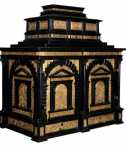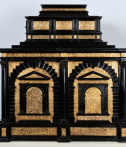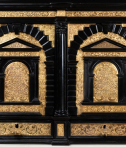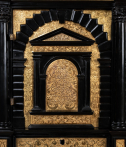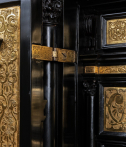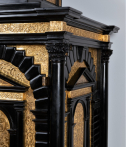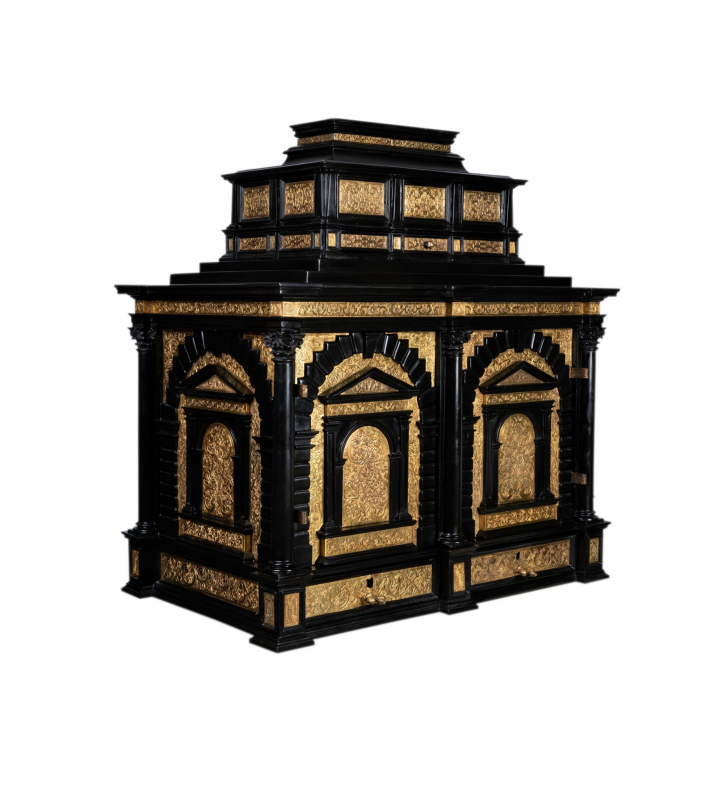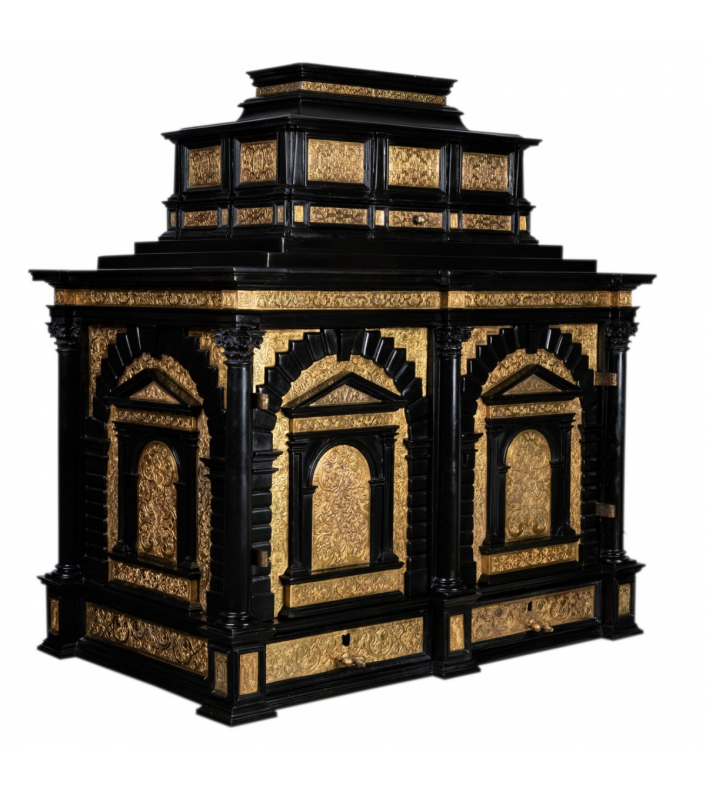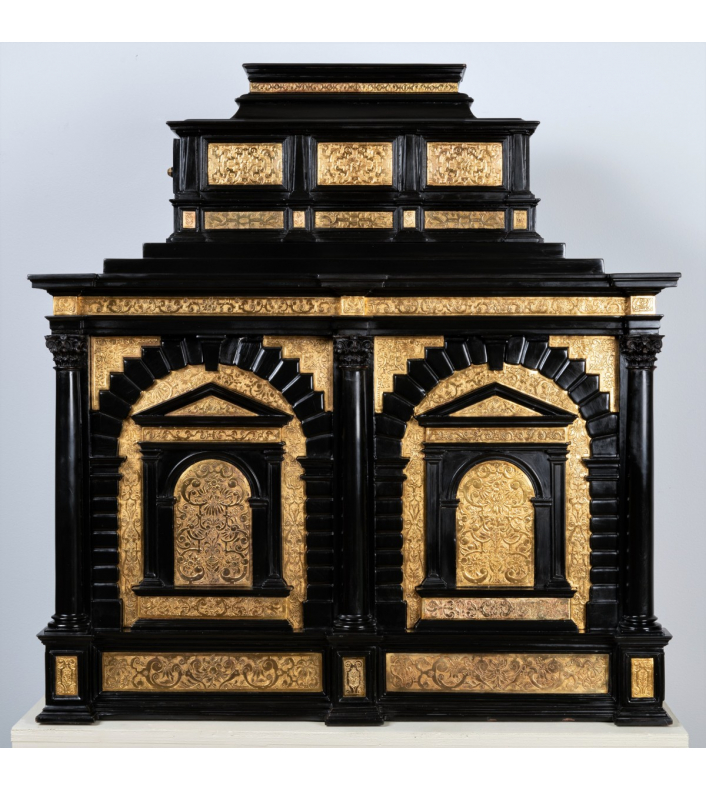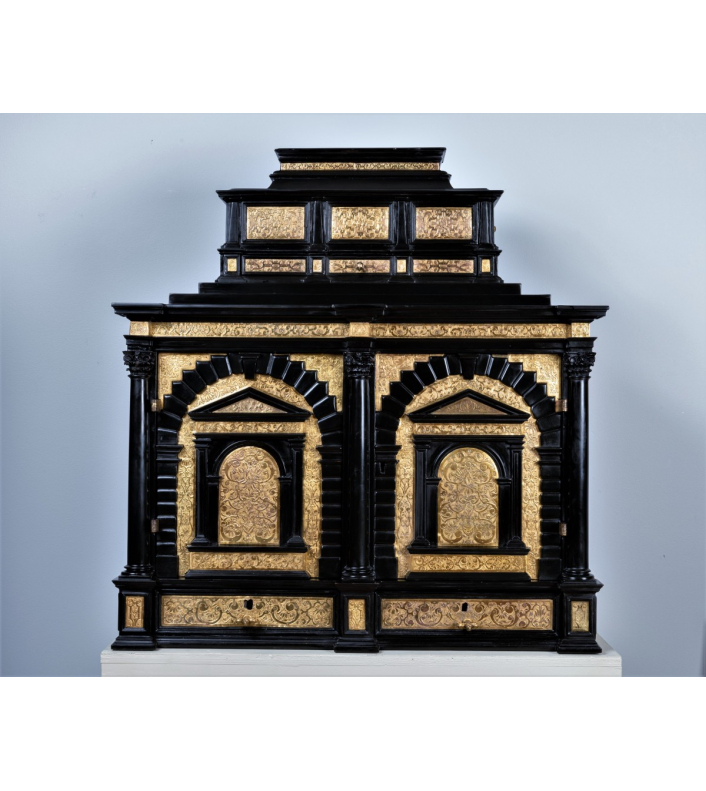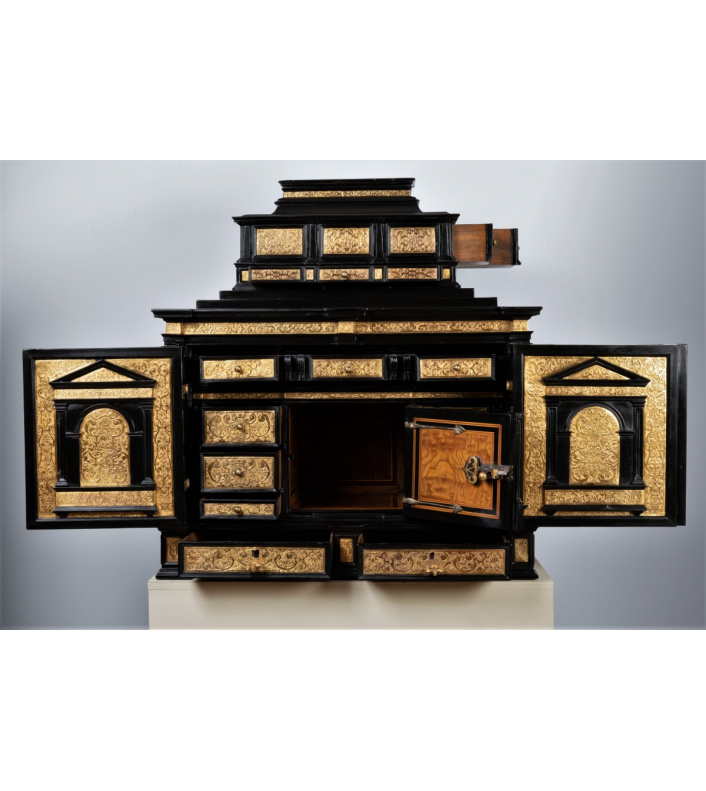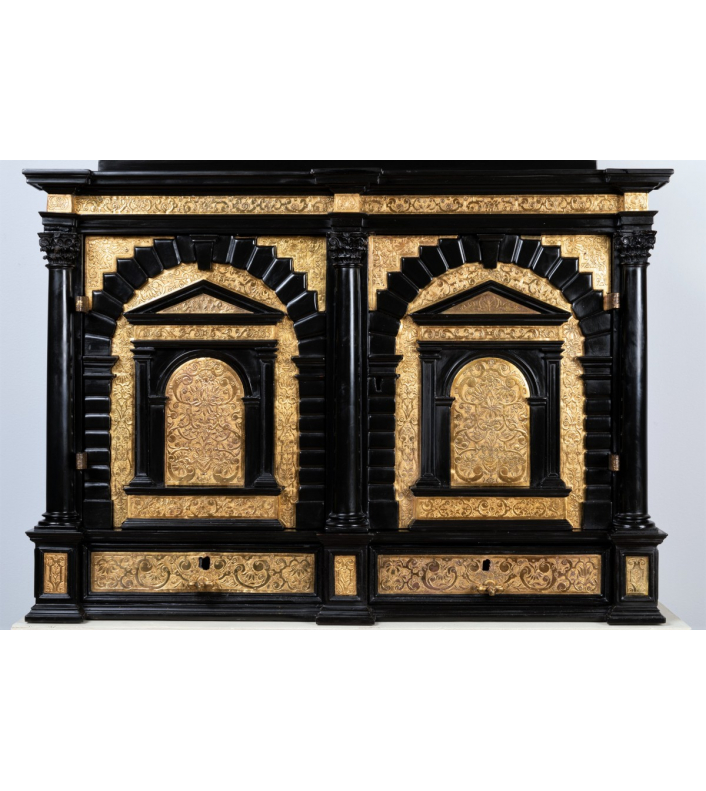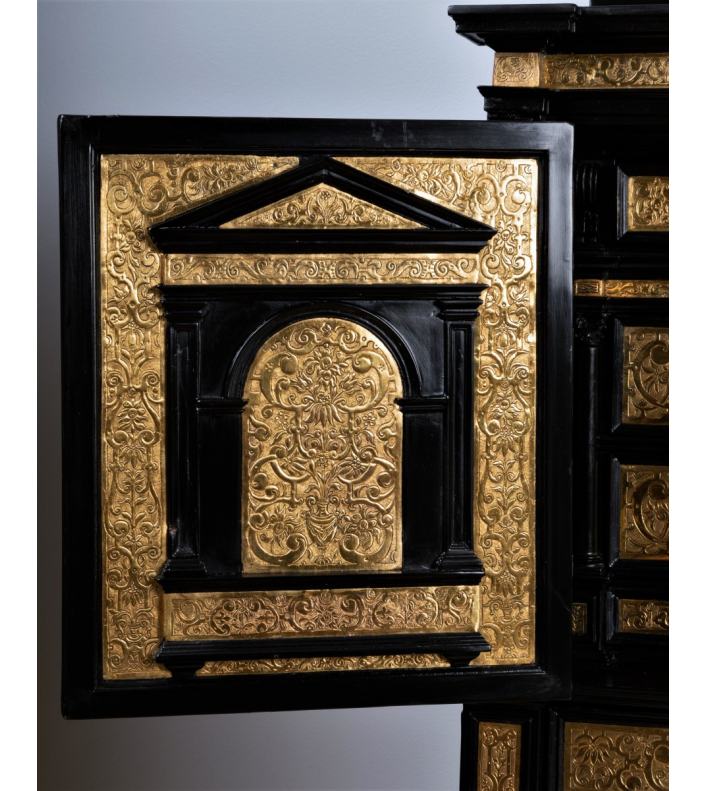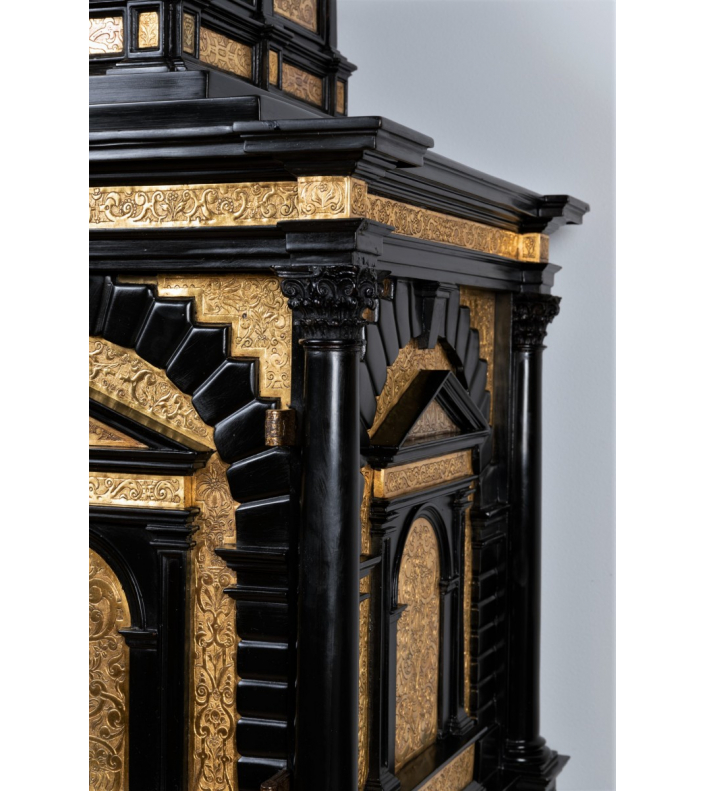A 16th c. Augsburg important ebony and brass cabinet
Rare and exceptional cabinet decorated on all sides in ebony and ebony veneer, adorned with engraved brass plates with patterns of foliage and windings.
A particularly sophisticated work combining remarkable know-how and refined decor. Furniture designed to be admired, its "all-sided" decor allowing it to be presented in the middle of a room.
With an architectural design, each side unfolds like the facade of a Renaissance palace, punctuated by cornices and columns with Corinthian capitals, pediments and semicircular arches, arcades and trompe l'oeil niches with Doric pilasters.
The cabinet opens with two doors revealing rows of drawers and a small central leaf which reveals a niche entirely inlaid with precious wood.
At the top is a removable chest with drawers on the lateral side.
The refinement of the furniture continues in the acid-etched decoration of the hinges and the lock of the small leaf.
The sober and noble lines in perfect balance in ebony and ebony veneer contrast with a dazzling decoration of gilded brass plates.
This decor draws its inspiration from the ornamental repertoire of the Renaissance, illustrators such as Peter Flotner or Virgil Solis, the symmetrical patterns in which flowery vases, foliage and interlacing unfold, constitute friezes enriched with flowers, fruits and plant motifs.
This engraved decoration is close to the works of Wenzel Jamnitzer (1507-1585), German silversmith and engraver at the court of the Holy Roman emperors, especially active in Nuremberg. Several of his works have similarities with our office (Wartburg Museul der Kunstsammlung, State Museum Berlin, Kunsthistorisches Museum Wien). These elements allow us to attribute the engraving on brass to one of the artists of the direct entourage of Wenzel Jamnitzer.
Augsburg, late 16th early 17th century
Size: h. 76,5 cm, w. 72,5 cm, d. 45 cm
Our cabinet is a reflection of the German princely courts' life known for their luxury and refinement associated with the rise of Kunstkammer (curiosity cabinets). Cabinets were ordered to keep various precious objects, cabinetmakers had to surpass themselves in virtuosity and know-how in order to offer the most spectacular pieces of furniture destined to demanding customers.
Kunstkammer is defined as a personal space dedicated to the conservation and exhibition of multiple collections created to reflect the world, in other words an outline of the museums to come.
The German princely courts of the early 17th century, guided by curiosity and the desire to discover and learn about the world, bring together incredible collections of objects classified into several categories: Naturalia (minerals, animals, plants), Artificialia (works of art). 'art), Scientifica (scientific instruments).



